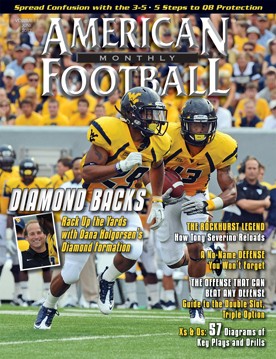AMERICAN FOOTBALL MONTHLY THE #1 RESOURCE FOR FOOTBALL COACHES
Article CategoriesAFM Magazine
|
Play-Action Passing From the Pistolby: Kevin KrauszWide Receivers Coach Knox College © More from this issue The 2011 Knox football team saw many statistical improvements that reinforce we are heading in the right direction. Our rushing attack improved by 45 yards per game and we averaged 21.5 more yards per game passing. One result was our scoring offense doubled from 2010. We run the Pistol and play-action complements the belly run play that we called 90 times last year. A simple play that we added this year that greatly impacted our passing game is play-action off of our belly run play. We completed 60% of our passes in this scheme. The concept and protection scheme can be run out of any offensive system that utilizes a pulling guard. We....The full article can only be seen by subscribers.
|
|
|||||||
| HOME |
MAGAZINE |
SUBSCRIBE | ONLINE COLUMNISTS | COACHING VIDEOS |
Copyright 2026, AmericanFootballMonthly.com
All Rights Reserved





